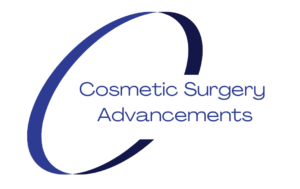Do you feel like you have aged overnight? Or maybe you want a more permanent and dramatic solution than you can achieve with Botox and fillers? Whatever the reason, as you age loose and sagging skin in the midface, the development of jowls, and lines across your neck can all make you look older. Depending on your lifestyle and genetics you might notice aging of the face from the age of 30 or even earlier.
Typically facelifts procedures (rhytidectomy) are performed on patients aged 40 or older and there are several types of cosmetic facelift surgery procedures that can reverse the clock by around 10 years. Two of the most advanced techniques are the deep plane facelift and SMAS facelift. Read on to find out the differences between these two cosmetic surgery procedures and find out how to know which one is the best facelift for you.
How Does an SMAS Facelift Work?
SMAS is short for the Superficial Muscular Aponeurotic System, which makes up a layer of subcutaneous tissue across the cheeks and in the lower face. The SMAS is a network of fibrous tissues, muscles and fatty tissue that starts at your forehead, covers the zygomatic arch (cheek bones) and ends at the bottom of the neck.
During an SMAS facelift procedure your plastic surgeon lifts and tightens the facial skin and repositions the SMAS musculature separately. Loose skin is excised from the face and neck and the SMAS tissue is lifted and repositioned under your cheeks and midface to lower face and neck. The SMAS facelift addresses wrinkles, skin folds, lost volume in the cheek area, and removes jowls, and helps to define the jawline.
How Does a Deep Plane Facelift Work?
A deep plane facelift, repositions the deeper tissues (called the deep plane). When the deep plane is lifted this also lifts the skin in the midface, treats jowls, defines the jawline and also lifts the neck. The deep plane technique improves the appearance of the neck and goes beyond the SMAS layer, reaching deeper facial muscles. Tension in facial muscles is reduced, which prevents the SMAS and skin from drooping, resulting in younger, smoother skin and improved facial contour in the midface region and jawline. A deep plane facelift also addresses jowls and the neck, reducing deep lines and skin laxity, resulting in more significant facial rejuvenation.
Deep Plane Facelift vs SMAS Summary
A deep plane facelift will lift and firm the ptotic muscles in your cheeks, chin, and neck. Benefits include lifted cheeks, a reduction in jowls and double chin and sagging skin, as well as a tightened jawline and neck.
An SMAS facelift repositions the facial soft tissues in your face to reduce early signs of aging and improve facial contours. Benefits are similar to a deep plane facelift but not as dramatic or long lasting. If you want your neck lifted you would need to have a neck lift(lower rhytidectomy) at the same time as an SMAS facelift.
What is the Best Facelift?
The best facelift is the one that can give you the results you desire, but there are advantages and disadvantages for each type of facelift.
The deep plane facelift tends to be more suited to patients 50 and over, although it can be done at a younger age if desired. The surgery is more extensive but the recovery period tends to be similar to an SMAS facelift. However, a deep plane facelift also lifts the neck and typically achieves a more dramatic and longer lasting result.
The SMAS facelift tends to be performed between the age of 40 and 50 and can also be performed in conjunction with a neck lift, however this will be classed as an additional procedure and will increase the cost of the procedure. The SMAS facelift is perfect if you have moderate signs of aging and it is less invasive than a deep plane lift, yet often produces impressive results.
The main distinction between SMAS facelift and deep plane lift is that SMAS surgery involves lifting the SMAS layer and skin separately, while deep plane lift raises all three components (skin, muscles and SMAS) as one. Another important disparity is that in the deep plane technique, it goes beyond the SMAS level and works on the lower muscles for more lifting.
A deep plane facelift involves greater restructuring of both the skin and facial muscles. If you seek a significant change in signs of aging, a deep plane facelift is the ideal option, especially if you are older and want the longest lasting results possible.
Your Facelift Consultation
Your plastic surgeon will be able to explain the techniques for both an SMAS and deep plane face and help you to understand which one is the best facelift for your individual requirements. During your consultation, your surgeon will assess your facial features, age-related goals, and your desired results from the facelift procedure. Neither technique is objectively better, both approaches can present excellent results.
This will rely on the plastic surgeon’s experience with each method, and their judgment of your facial shape, objectives and expectations. Regardless of the method chosen, a qualified and experienced plastic surgeon who is able to comprehend the results you want to achieve and devise an appropriate strategy for you, is the most important factor for success.
SMAS vs Deep Plane Surgery, Anesthetic and Recovery
Typically most plastic surgeons will perform both the SMAS and deep plane facelift procedures under general anesthetic. It is likely you will stay overnight in hospital following a deep plane facelift. But, more and more plastic surgeons are choosing to perform the SMAS facelift under a local anesthetic with or without sedation, as a daycase procedure.
SMAS vs Deep Plane Recovery Period
Day of surgery – You will feel very sore and tender. If you have had a general anesthetic you may also have some side effects such as nausea and temporary confusion. You may have drains which will be removed before you go home.
Second day after surgery – Whether you stay overnight in hospital or go home, you may find you have more swelling, bruising and pain the day after your facelift. This is normally well managed with painkillers and you will need to rest and take it easy for the first three to five days. You can normally have a shower 48 hours after both an SMAS and a deep plane facelift and wash your face.
Two weeks after surgery – For the first one to two weeks you may need to wear a compression garment and neck support and keep your head elevated when sleeping. Sutures are normally dissolvable, or removed after one week.
First six weeks after surgery – You should avoid any strenuous lifting or exercise and typically patients take between one to two weeks off work.Final results – Your skin and muscle will take time to settle and heal. The majority of swelling has normally dissipated and the results are generally evident after six months, but can take up to a year.
SMAS vs Deep Plane Cost
The SMAS facelift tends to be less expensive than a deep plane facelift because it is normally a faster procedure. When performed under a local anesthetic as a daycase the cost will also be reduced as there will not be an additional anesthetist fee. But there are several other factors that will impact the cost of your SMAS or deep plane facelift. These include:
- Your surgeons qualifications
- Experience of your surgeon
- Facility where surgery is performed (a hospital tends to be more expensive)
- Location of surgery (London and surrounding counties may be more expensive)
In the UK the average price of an SMAS is between £8000 and £14000 and a deep plane facelift is between £9000 and £20000.
In the US the average price of an SMAS is between $8000 AND $14000 and a deep plane facelift is between £15000 and $30000.
My Opinion
Aging isn’t so bad if you’re comfortable with the way you look.
Stay safe and always check your cosmetic surgeon is a specialist plastic surgeon registered with the appropriate regulatory medical bodies for plastic surgeons.
Annabelle Baugh | Founder

